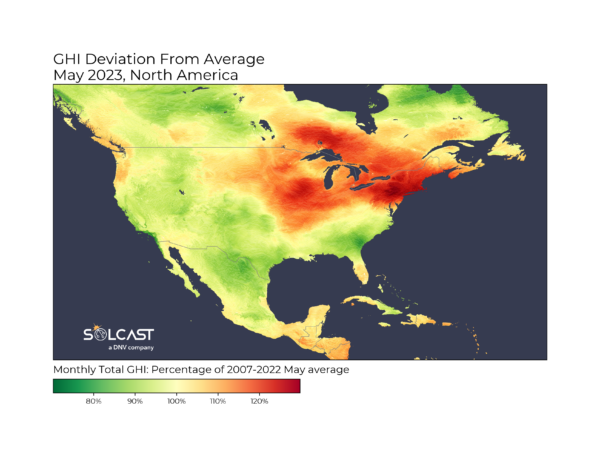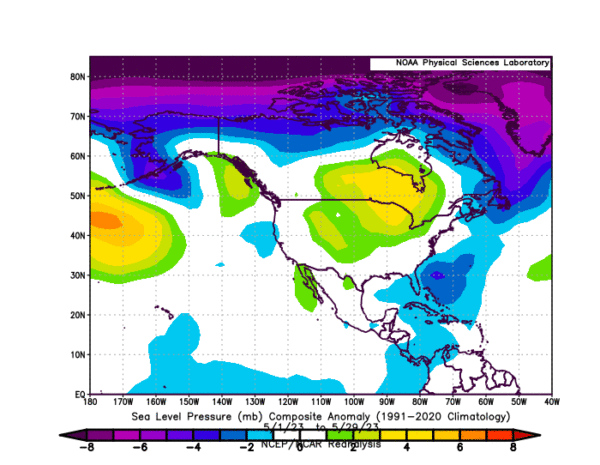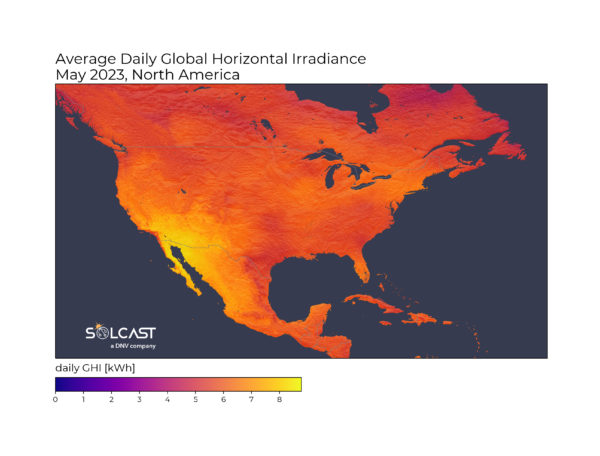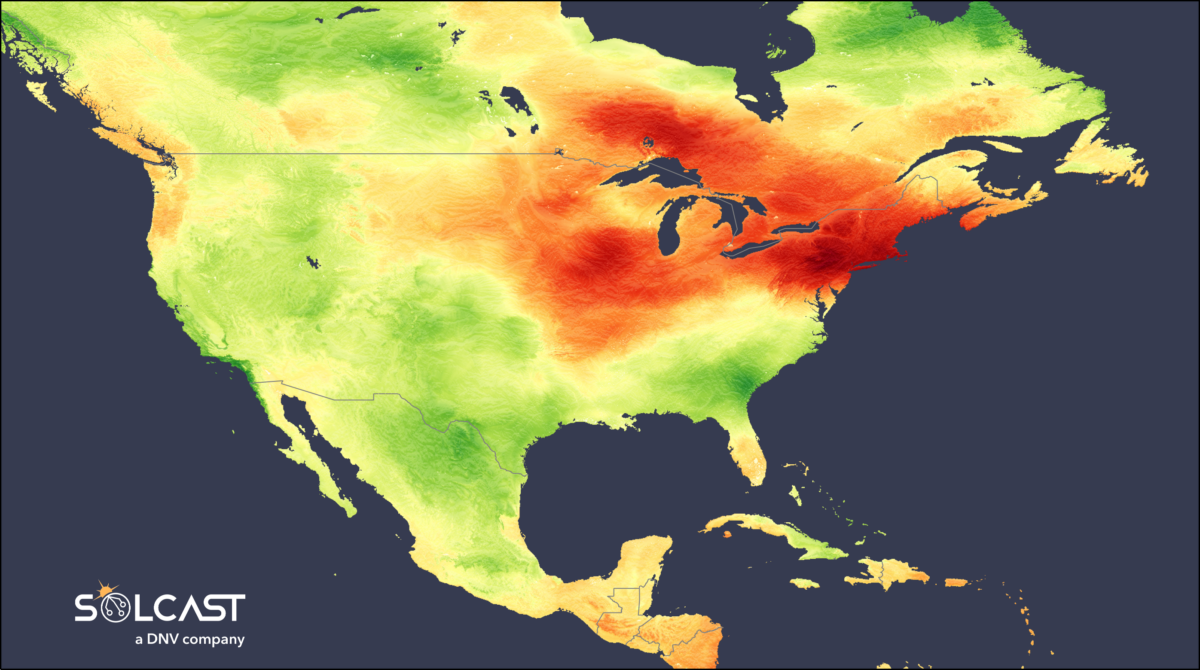Solar plants and rooftops across the entire Northeast, Great Lakes and Midwest regions received above-average irradiation during May than normal. Parts of Illinois, Ontario and New York received as much as 25% more than the May average, based on Solcast's data.
 New York registered a new record on May 18th, when solar power met 20% of the state power demand, as reported in pv magazine. New York's total irradiance in May was closer to California's average than its own. With California irradiance being below average during May due to winds pushing oceanic clouds pushing further onshore, Los Angeles and San Diego rooftops actually received less irradiance during May than New York's or Boston's.
New York registered a new record on May 18th, when solar power met 20% of the state power demand, as reported in pv magazine. New York's total irradiance in May was closer to California's average than its own. With California irradiance being below average during May due to winds pushing oceanic clouds pushing further onshore, Los Angeles and San Diego rooftops actually received less irradiance during May than New York's or Boston's.
The sunny May for the Northeast, Great Lakes and Midwest was caused by the dominance of a high-pressure weather pattern over North America. The anomalous high pressure was centered over central-eastern Canada, partly in association with the positive phase of Arctic Oscillation, whereby weather systems contract closer to the Arctic and pressure is higher over continental areas. The high pressure
suppressed cloud-bearing systems and brought cooler, dry air from the artic over eastern Canada and the US, from the Midwest to the East Coast.

Elsewhere, across southern and western parts of North America, including Mexico, received irradiation close to or below normal during May. In a repeat of weather patterns seen during April, the Southeast and Gulf regions, including Texas and northeastern Mexico, received more clouds and less irradiation than normal, due to stronger moist easterly winds from the Atlantic and Gulf of Mexico.
Popular content

Solcast produces these figures via its irradiance forecasting and weather API by tracking clouds and aerosols at 1 to 2 km resolution globally using satellite data and proprietary AI/ML algorithms. This data is used to drive irradiance models, enabling Solcast to calculate irradiance at high resolution, with typical bias of less than 2%, and also cloud-tracking forecasts. This data is used by more than 300 companies managing over 150 GW of solar assets globally.
The views and opinions expressed in this article are the author’s own, and do not necessarily reflect those held by pv magazine.
This content is protected by copyright and may not be reused. If you want to cooperate with us and would like to reuse some of our content, please contact: editors@pv-magazine.com.


By submitting this form you agree to pv magazine using your data for the purposes of publishing your comment.
Your personal data will only be disclosed or otherwise transmitted to third parties for the purposes of spam filtering or if this is necessary for technical maintenance of the website. Any other transfer to third parties will not take place unless this is justified on the basis of applicable data protection regulations or if pv magazine is legally obliged to do so.
You may revoke this consent at any time with effect for the future, in which case your personal data will be deleted immediately. Otherwise, your data will be deleted if pv magazine has processed your request or the purpose of data storage is fulfilled.
Further information on data privacy can be found in our Data Protection Policy.